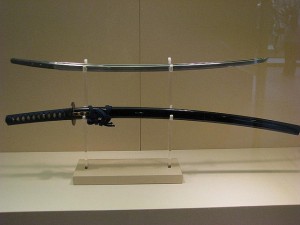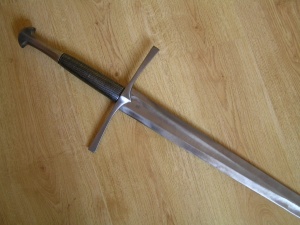Everyone knows about the katana: The most famous and well-loved sword of this age! However, is it truly the best sword ever made, as has been suggested by so many?
Let there be no doubts: The katana was indeed an effective weapon! It happens to be one of my favorite weapons, both technically and aesthetically and is the weapon I have the most experience in. Many of us have seen the amazing feats of masters in the Japanese sword arts: The Katana can cut! But back to the question: Is it the best?
https://www.youtube.com/watch?v=0UMCsoDljUk
This video shows the cutting capabilities of a particular katana in the hands of a highly skilled practitioner. He cuts straight through the mat with ease. Some say that bamboo is another great test of sharpness of a blade and skill of the user, but check this video out:
http://www.youtube.com/watch?v=fFQ4aanmupU
Here is another cutting tatami too!
http://www.youtube.com/watch?v=ZR9k23U-P10
These videos show that even a completely blunt sword can cut these targets using proper technique. This means that the katana is not more capable than another sword.
Furthermore, in the construction of a katana, the blade was not folded because that made it a superior sword. The reason katana were originally folded was that Japan had very poor iron and steel of large quantities could not be made, nor consistently in their carbon content, so they steel had to be folded to create a stable solid. Also, with the differential hardening technique used for the katana, that gave the blade rather uneven durability. Yes, the soft spine could absorb shock well, but it did not spring back to shape once bent too far. Also, the hardened edge was prone to chipping badly. It took a professional swordsman to be able to care for these swords and use proper technique for these swords to survive battle.
European swords, on the other hand, tended to be through-hardened and then tempered. This made the entire blade a long, durable spring. It still took a professional to properly use these swords, but their construction made them tougher in general.
Long story short, European blades tended to be more durable and better for piercing armor, but in this modern age, it’s all about our preferences!


Great article. I do not think one is better or one is inferior. They are simply different but the same. However, one historical fact you might be able to use for reference is the evolution of Katana. In different era, Katana has different shape and quality. One history book mention during the Mongol Invasion samurais would find that their Katana would break when encounter Mongol’s armor and as result of the encounter, Katana becomes heavier. ( sorry can’t remember which book ). Katana what we see today mostly is the design of Edo period. Edo period people no longer fight in heavy armor so the design of Katana does not have to consider piercing of armor. In addition, European Sword fighting techniques share many similarity as Japanese sword fighting. Start up position, techniques and even close quarter grappling techniques are similar. It is amazing even in different part of earth people share similar ideas.
Great points made all around! It is true that the katana has evolved, as have European swords. Yes, during the Edo period people stopped wearing such heavy armor generally, due to musket fire going straight through. Most people dropped the armor to move faster, but those rich samurai sometimes bought western plate armor cuirasses to better protect them from muskets. Either way, that is a great point! Interesting the way things evolve all over the world. I have noticed many similarities between the two as well! There are also many differences. If you think about it though: there are only so many ways the human body can move 🙂
European or Japanese Swords? Read about the clashes between portugueses or castilians against japaneses and you will have the answer…